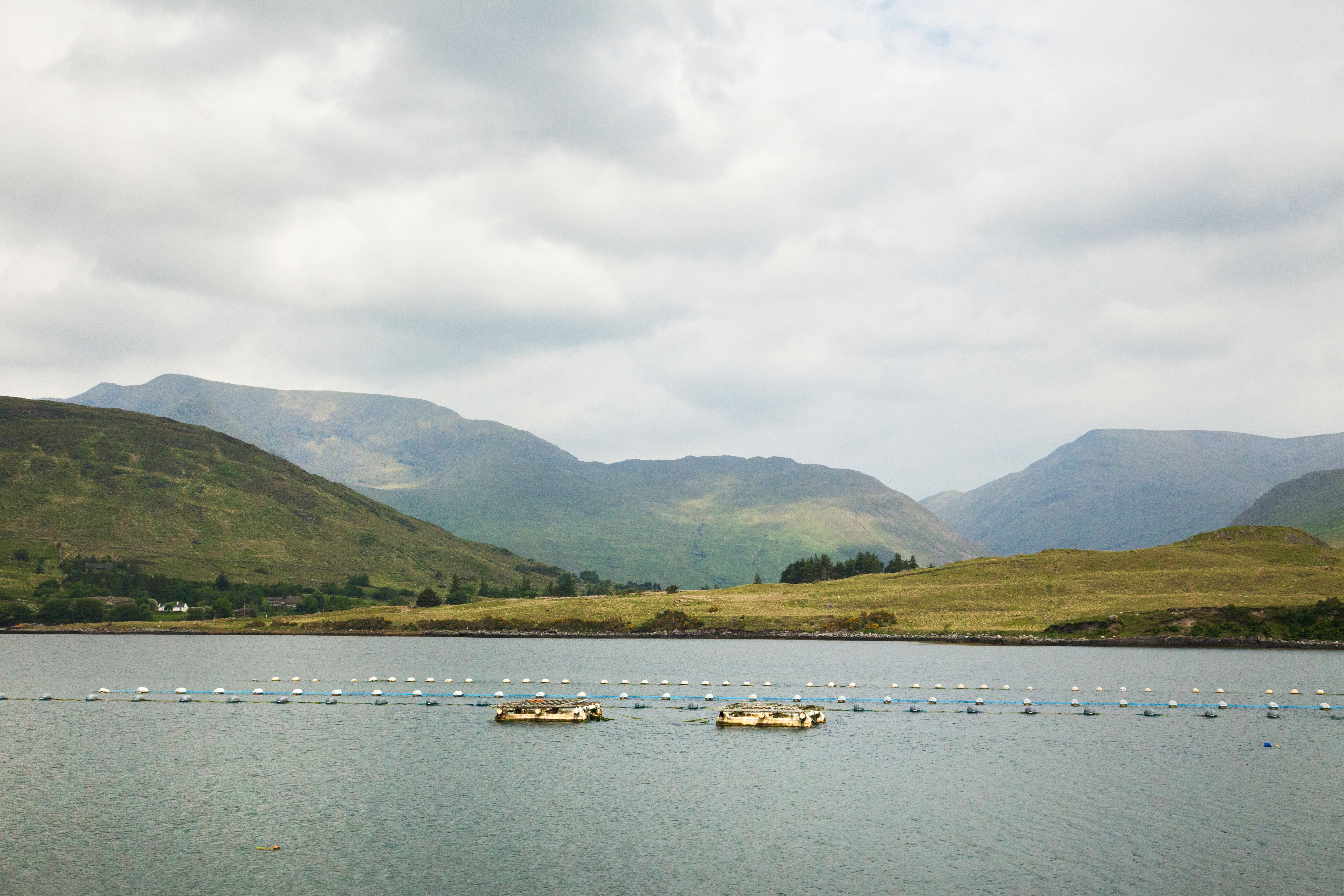Irish Aquaculture in 2025: Balancing Growth and Sustainability
Introduction
Irish aquaculture, the country’s quiet marine industry, is at a crossroads. Worth around €180–200 million annually, the sector supports over 1,900 jobs directly, many in coastal communities that have seen everything from post offices to pubs disappear. It’s a vital economic lifeline stretching from Donegal to Bantry Bay, producing world-class salmon, mussels, and oysters.
Yet in 2025, the debate over fish farming has never been sharper: how can Ireland grow its blue economy without harming the very waters it depends on?

The State of Play
Ireland’s aquaculture sector may be small compared to global leaders like Norway or Scotland, but it punches above its weight in quality. Irish organic salmon and rope-grown mussels have carved a strong export reputation, particularly in France, Spain, and Germany. Over 90% of all Irish aquaculture output is exported, contributing significantly to rural incomes and Ireland’s food brand abroad.
But for years, growth has been hobbled by a familiar problem: licensing delays. The aquaculture licensing system, some say the most cumbersome in Europe, has left over 200 applications in limbo at any given time. Some operators have waited five years or more for decisions, effectively stalling innovation and investment.
A 2024 review by the Department of Agriculture, Food and the Marine admitted that outdated processes and overlapping environmental assessments have slowed expansion and undermined confidence in the sector. Plans are now in motion to streamline the process under a new National Aquaculture Licensing Authority, due to come into effect in 2026.

Balancing Growth with Environmental Duty
Critics argue that Ireland’s fish farming model hasn’t always been kind to its coastal habitats. The core issue lies in finding balance, boosting production without damaging fragile ecosystems.
Environmental groups point to concerns about nutrient build-up beneath cages, potential disease spread, and the risk of farmed salmon escaping into wild stocks. Farmers, meanwhile, argue that tighter controls, fallowing periods, and newer cage technologies have already reduced impacts dramatically.
And there’s truth to that. Over the past decade, Ireland has quietly improved. Most salmon farms now operate under multi-year fallow rotations, allowing sites to recover. Many are also trialling semi-closed containment systems, reducing direct contact between farmed fish and the open sea. Water-quality monitoring is routine, and newer feed formulations have cut waste.
Meanwhile, the shellfish sector, producing around 30,000 tonnes annually, has become a model for low-impact aquaculture. Mussels and oysters filter water naturally, improving clarity and biodiversity while producing a premium export product. In that sense, shellfish farms are a sustainability success story Ireland rarely talks about.

Licensing: The Bottleneck No One Can Ignore
Ask any fish farmer what keeps them awake at night, and they’ll likely say one word: licensing. Ireland’s labyrinthine system has made it nearly impossible to expand production or trial new systems quickly.
The current system, shaped by overlapping EU directives on habitats, water, and environmental impact, has created a bureaucratic bottleneck. Every application must balance local community input, environmental concerns, and long-term sustainability goals, all good in theory, but painfully slow in practice.
The planned National Aquaculture Licensing Authority is meant to fix this. Its goal is to cut waiting times from several years to under one, using a single streamlined application process and clearer environmental criteria. If it works, it could finally unlock growth for a sector that’s been standing still for too long.

The Push Offshore
One of the biggest trends in 2025 is the shift toward offshore fish farming, moving cages into deeper, more dynamic waters. Offshore systems can reduce localised seabed impacts and disease pressure, while opening up new space away from crowded inshore bays.
Trials are already under way in Galway Bay and off Donegal, testing new cage designs built to handle Atlantic conditions. The technology isn’t cheap, but the long-term benefits could be transformative. Offshore sites may allow Ireland to double production within sustainability limits, provided the regulatory and insurance frameworks can catch up.
Still, the financial barrier remains high. Setting up a new offshore site can cost millions, and without consistent policy support, few small operators can take that leap. The Marine Planning Framework has flagged offshore aquaculture as a priority growth area, but until the licensing system is fixed, progress will remain slow.

Local Jobs, Local Tensions
For many coastal communities, aquaculture isn’t an abstract policy topic, it’s their livelihood. Towns like Castletownbere, Dingle, and Kilcar depend on fish farming to sustain local economies. But it’s not without friction.
Some residents worry about visual impact, navigation rights, or the perception of industrialisation of coastal waters. Others welcome the steady jobs and year-round activity that aquaculture brings, especially where traditional fishing has declined.
In short, fish farming has become a microcosm of rural Ireland’s wider dilemma, how to balance tradition, environment, and economic survival.

Can Growth and Green Coexist?
The honest answer is: yes, but not easily. Ireland has the natural assets to become a leader in sustainable aquaculture, clean waters, cool temperatures, and a strong scientific base through BIM, Teagasc, and the Marine Institute.
But without a faster, clearer, and science-led licensing system, those advantages will continue to slip away. Likewise, growth must come with transparency, community engagement, and robust monitoring so that “green” isn’t just a slogan.
If Ireland can get that balance right, encouraging innovation while protecting its bays and estuaries, aquaculture could help drive a new era of coastal prosperity.

Conclusion
Irish aquaculture in 2025 is a sector full of promise but tangled in red tape. It’s caught between the demand for sustainable food and the need for fair regulation. The value is already there, €180–200 million annually, but the potential is much greater.
Fix the licensing logjam, invest in offshore innovation, and support smaller operators with practical grants, and Ireland could lead the world in sustainable seafood.
If we want a thriving blue economy that complements, not competes with, traditional farming, it’s time to move from talking about balance, to building it.
*By Anne Hayden MSc., Founder, The Informed Farmer Consultancy.
